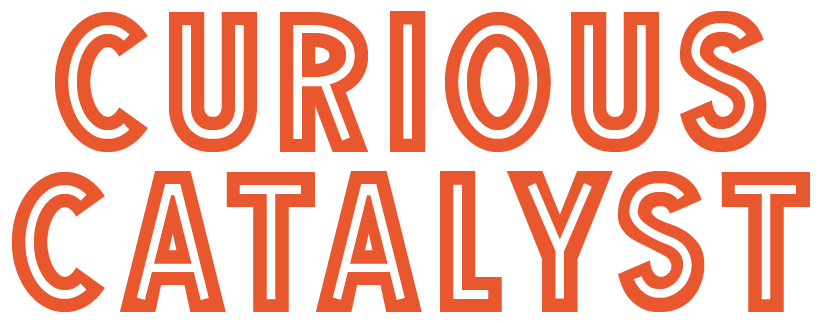I am a fastidious grammarian. Usually. And my copywriting guru tells me that I need to stop using ellipses in my business writing. But...
There IS a reason. And it dates back to my days in theater and film. The inimitable and beloved acting and directing coach, Judith Weston, wrote two books that any director worth his salt will have worn and dog-earred in his bag. And the most effective tool I learned from her is a simple but powerful technique: the strategic use of the word "or."
But it's not: Or.
It's: Or...
The ellipses are the magic. They are an invitation to co-create what comes next.
With Jon Gosier, my THNK challenge partner, in the common stance of innovation designers - open, engaged, listening, mediating.
When a director is trying to do the delicate dance of coaxing out a layer of emotion from an actor, inviting her into the process while carefully creating a safe environment for experimentation and exploration, a declarative will kill the mood. It's too aggressive. But ellipses open a door. I have used this technique to sublime effect in rehearsals, with petulant developers in technical settings, and with resistant clients. And I was reminded of this dynamic while pondering the question of exactly what the role of a "designer" is in today's world of crowdsourced solutions and hackathons.
There is an incredible value in looking to bottom-up input, but brilliant urban planning isn't the result of voting on ideas or distilling the common denominator from the flood. I learned this lesson first-hand while pouring my energy into a project called Tribewanted. It launched in 2006 as an effort to take a social network, like MySpace which was burgeoning at the time, and do something pro-social in the real world. The founders, who had both vision and energy, rented an island in Fiji and, for a small membership fee, do-gooders from around the world could visit the island and vote on how funds were allocated for village development. In theory, a novel idea; in practice, it led to the kind of vanity projects and whimsy on which too many tax-payer dollars are wasted.
I joined shortly after the project got underway, to indulge my interest in social experiments. And I got hooked, eventually art directing a flat-pack furniture project to raise money for the local primary school. But the most valuable lessons were learned in observing how the role of design works in complex social settings. Where dynamic systems are concerned, the designer often arrives at the best solutions when acting as an experienced instigator - balancing stakeholders, constraints, and needs (business and user, because you can't succeed without both).
But more than provocation, the designer must be accomplished at orchestrating discussion, facilitating lateral approaches, and culling bottom-up inputs as well as knowing when to do so. Subject matter expertise is engaged and leveraged in context, and fresh eyes are invited into the process to contribute new observations and perspective. But innovation most often happens at the intersection of "how things have always been done" (the frequent expert perspective) and "wouldn't it be great if" (the most common layperson perspective). And I credit the good designer with being the catalyst who can locate or conjure the conditions for this kind of ideation.
One of my favorite proponents of this interpretation of the designer is Alex Gilliam, the cheerleader of possibility behind Public Workshop, an organization dedicated to helping individuals, schools and communities achieve great things through design and maximize its potential as a tool for positive social change. I met Alex during Compostmodern 2013 where we chatted about how difficult it is becoming to disabuse clients of the desire to look for answers solely from the crowd. It's not that we framework thinkers are defending our own role in the design process, but we know that it's an art to coax the best results out of the increasingly empowered citizens within the lessons learned by long-time practitioners.
This is the type of innovation design we practice at Curious Catalyst, and it's more akin to what I'd describe as the application of creativity. It's a point of view or a way to listen to the spectrum of stakeholders so that solutions emerge and develop to gain shape and definition. Today's urban challenges will not be solved by experts nor the wisdom of crowds alone. And as I ponder the future of collaborative innovation, I wonder if it's a question of "and" instead of "or"...


